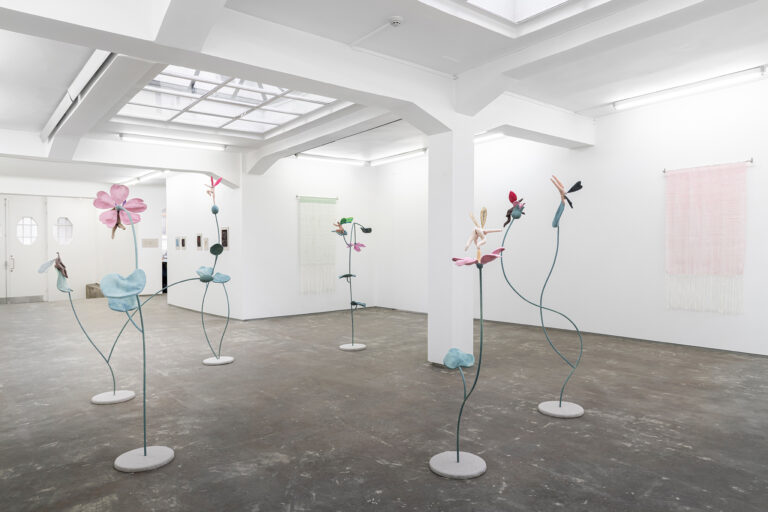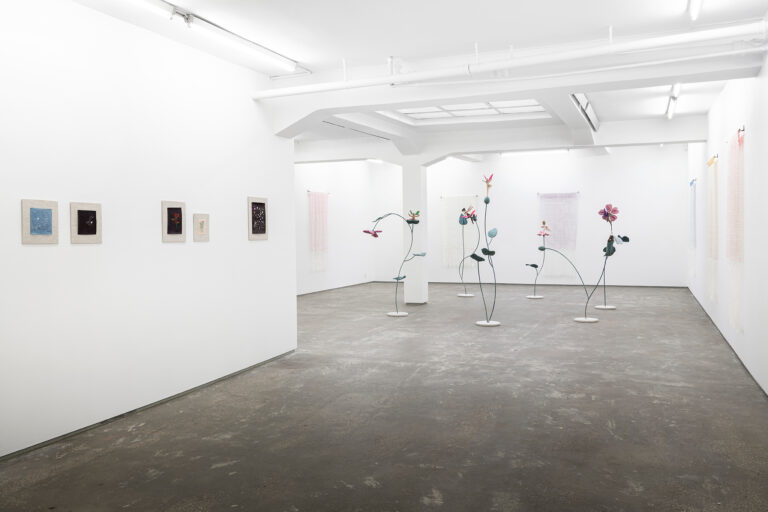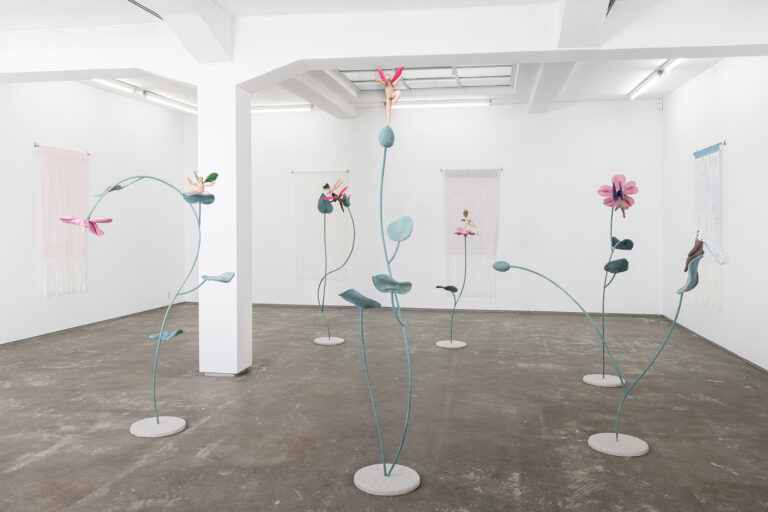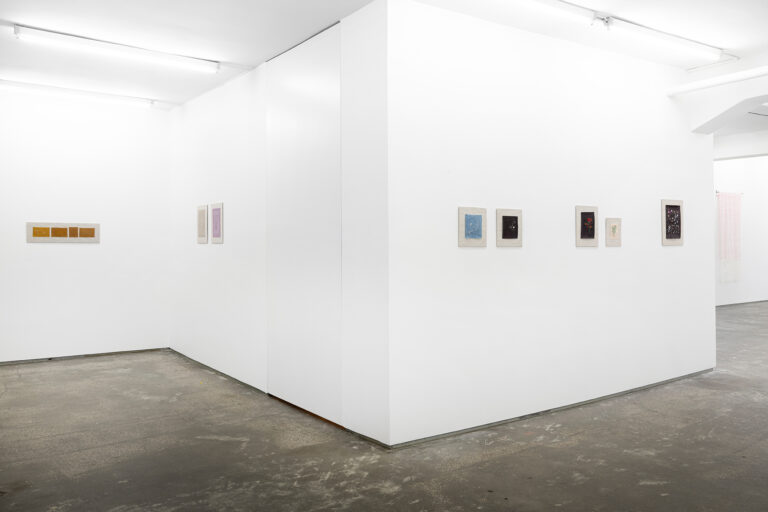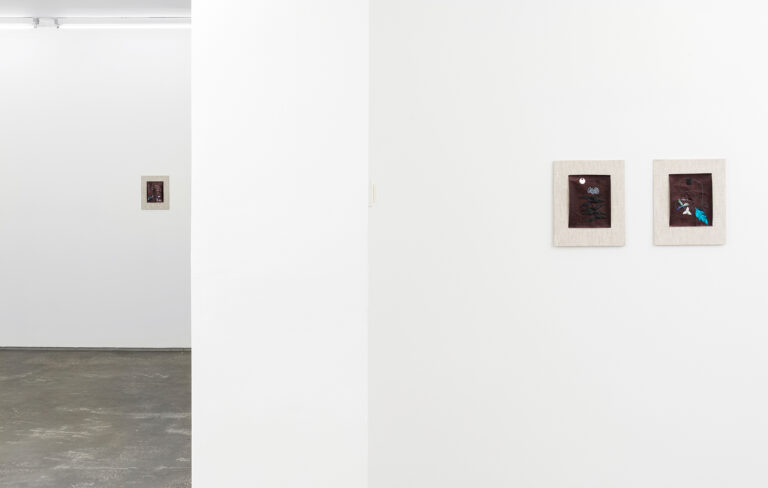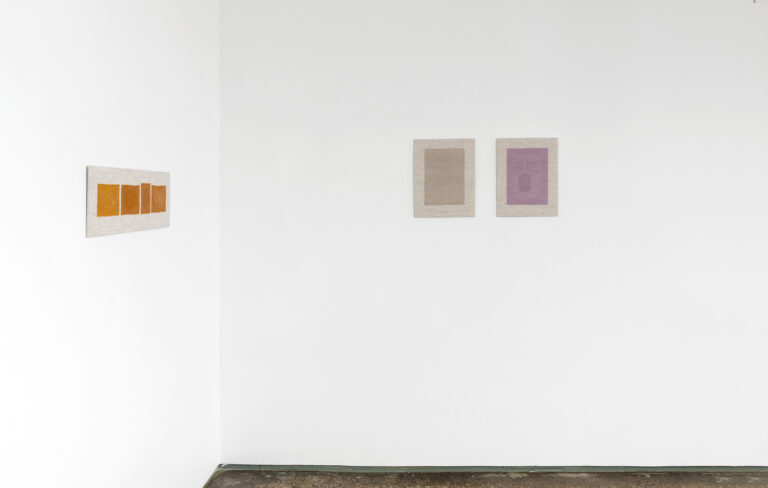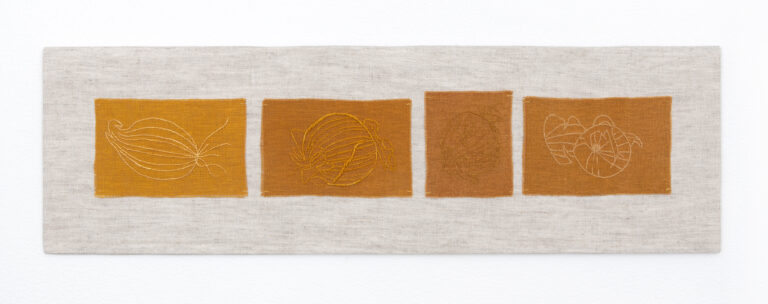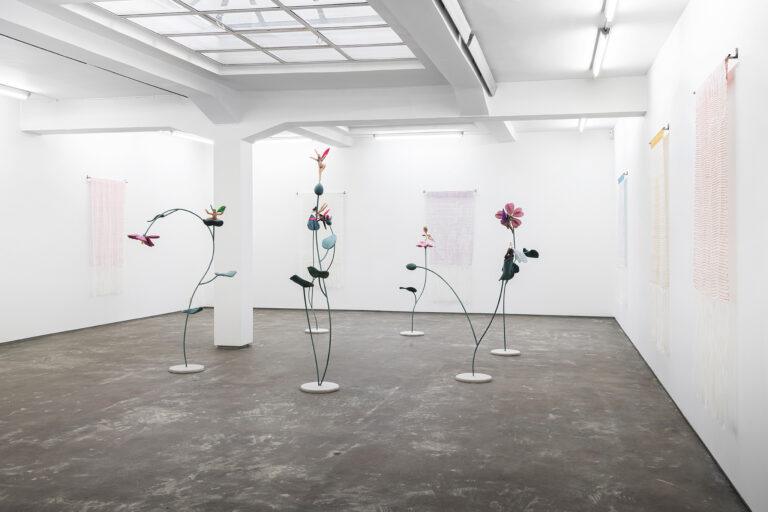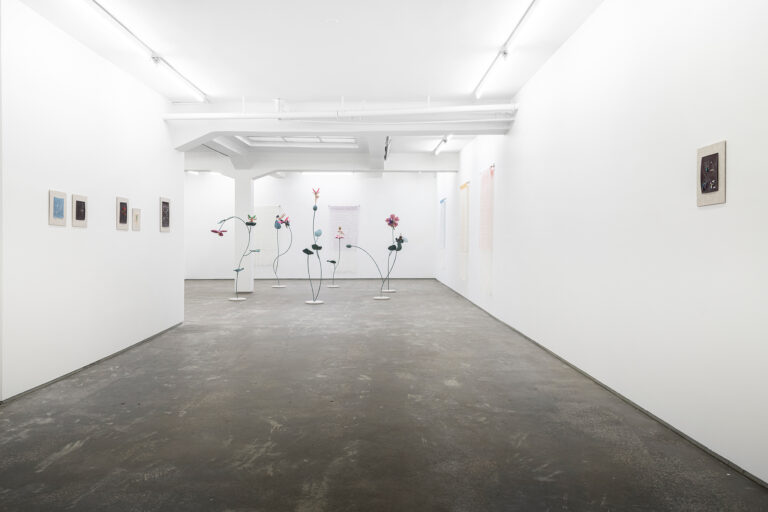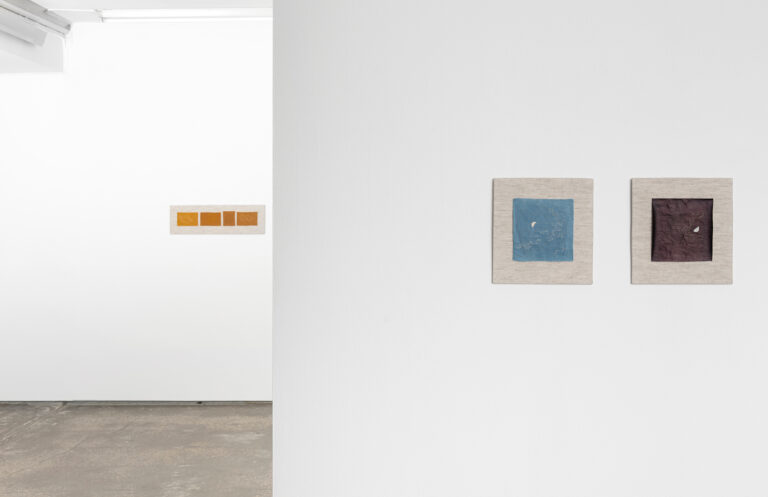The Threads of Life
By Jorunn Veiteberg
“We hang from a thin thread and that thread is spun by the shadow of chance”, Lars Saabye Christensen writes in his novel The Half Brother. Our language is full of these and similar textile metaphors. Life can be both “entwined” and “interwoven” with that of others. We can “weave a web of lies” or “follow a thread of communication”, and we can “tie up loose ends” to make a whole. It is also telling that the word, text, is so closely related to textile. Both come from the Latin textere, which means to weave: the text with words, textiles with thread. The fact that we so often use textile metaphors to describe the outside world says something about the close relationship we have with textiles as humans. From time immemorial, people have produced cloth for use and ornament. They bear witness to changing standards of life and habits, but stitches can just as well hold anger and rebellion, dreams and longing.
Ask Bjørlo joins a rich tradition when choosing to express himself artistically through weaving, seams, embroidery, and knitting. There are almost no textile craft techniques he doesn’t master. His interest in textile history and respect for all the crafts people whose shoulders he stands on, is an important dimension of his artistic life. So, it makes sense that he calls himself a textile artist. Motif and patterns contain more or less obvious references to embroidery from past times, what in the 1800s was termed “women’s work”, but also to well-known artists such as Frida Hansen (1855–1931), one of the great innovators of Norwegian tapestry. But the demonstration of different techniques and dialogues with predecessors in the field, is not an aim in itself. The pictures and sculptures in this exhibition are first and foremost about Ask Bjørlos’ way of being in this world and the subjects he is passionate about and wants to share with us.
At first glance, the woven images in the series “Notions” may look abstract. To weave is to create structure out of thread, it is to repeat the same actions over time until a pattern emerges. In these works, the patterns function on two levels, as the Beiderwand technique gives a double-woven effect. One layer is in line with the laws of the loom and consists of vertical (warp) and horizontal (weft) rows. The warp thread is white in all of them, but each woven piece has one other colour: red, green, blue, yellow. In this way, a striped pattern materialises, but the linen thread is very thin and sparse between each weft. This gives the woven fabrics a fragile and vulnerable appearance. If this symbolises life, it is one we have to handle with care, delicate as it is. The other layer has different plants and vegetation as motif. They resemble silhouettes, carefully suggested as they are, white on white. We either have to step back to see them clearly, or maybe the opposite, step really close? The titles identify the motifs such as briar roses, mushrooms and leaves in wind. In this way, nature and human life are intertwined in a common universe in these double woven pieces.
If you let your eyes wander from the tapestries to the embroidered and knitted works, you discover the nature motifs repeated. Flowers, fruit, butterflies, stones and here and there a glowing moon. Some of the works are in muted tones, others filled with radiant sequins. The way Ask Bjørlo depicts nature, it is both very much alive and full of captivating forms. The title of the exhibition “Thread Lightly” is therefore not a misspelling, but a play on the use of thread as a metaphor for life and textiles as a medium to depict nature, and partly encourages you to tread lightly. Einar Skjæråsen’s poem “Do not tread heavy in the grass”, is an obvious association and I’m convinced Ask Bjørlo would agree with the line: “Be cautious and caring of all / that flies and leaps and grows”. Protecting nature’s diversity has always been important to him and when he was younger he was active in the environmental organisation Nature and Youth. This commitment is the foundation of all the works in this exhibition.
The concern over the negative environmental changes in our time is especially obvious in the facial expressions of the small three-dimensional human figures in the installation “Wingbeat”. They are both angry and upset. As weightless beings they sway back and forth on leafy stems. Ask Bjørlo has always been fascinated by stories about fairies and these figures form ‘a fairy ring’. Spring is, according to folklore, the season of fairies, as this is when everything in nature awakens. A common belief is that fairies personify the idea that everything in nature has a soul. As small spirits, they live under the ground, in mountains or in wells and sources. During the Romanticism of the 1800s, they became a common motif for artists, but represented as extremely beautiful young men and women. Ask Bjørlo depicts the fairies as a combination of fabled creatures with wings and human figures with both male and female characteristics. They remind us of how we as humans are not superior to nature but need to find our place within it. At the same time, he shows a colourful and lush world. A red thread through this exhibition is that life is also wonderful and magical.
Ask Bjørlo (b. 1992, Hønefoss, Norway) lives and works in Oslo, Norway. He recently finished his MA in Material based Art at Oslo National Academy of the Arts (2017-19). Bjørlo has studied textile and weaving at renowned textile schools since 2011. In 2017 he was included in the archive of 89plus on invitation by founders and co-curators Hans Ulrich Obrist and Simon Castets. Recent exhibitions include: A thousand threads Lillehammer Kunstmuseum, Norway (2013-14); an Ask Bjørlo installation in Frida Hansens room, Stavanger Kunstmuseum, Norway (2018); Ode to a dishrag, hymn to a tiger Kunstnerforbundet, Oslo, Norway (2017) and Kunsthall Stavanger (2018); CHART ART FAIR in Copenhagen, Danmark (2018); Sandefjord Kunstforenings Art Price at Sandefjord Kunstforening, Norway (2019); Oslo National Academy of the Arts Graduation show (2019); Tekstvevnad at OSL contemporary (2019).
Recent exhibitions include a solo presentation at Kunsthall Oslo and the group show THERE IS NO PLACE LIKE HOME at OSL contemporary both in 2020.

